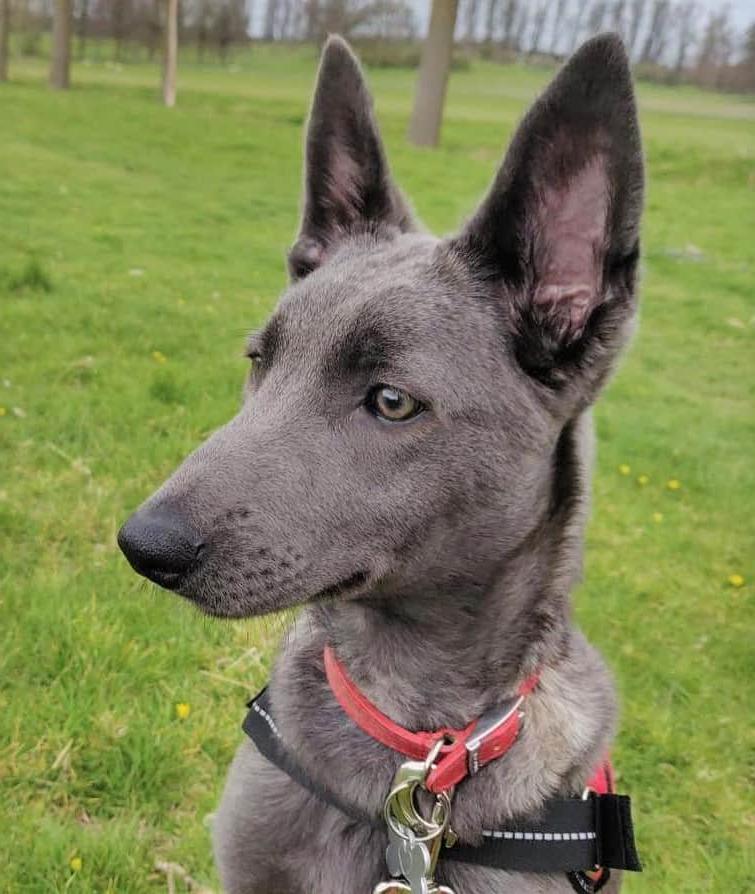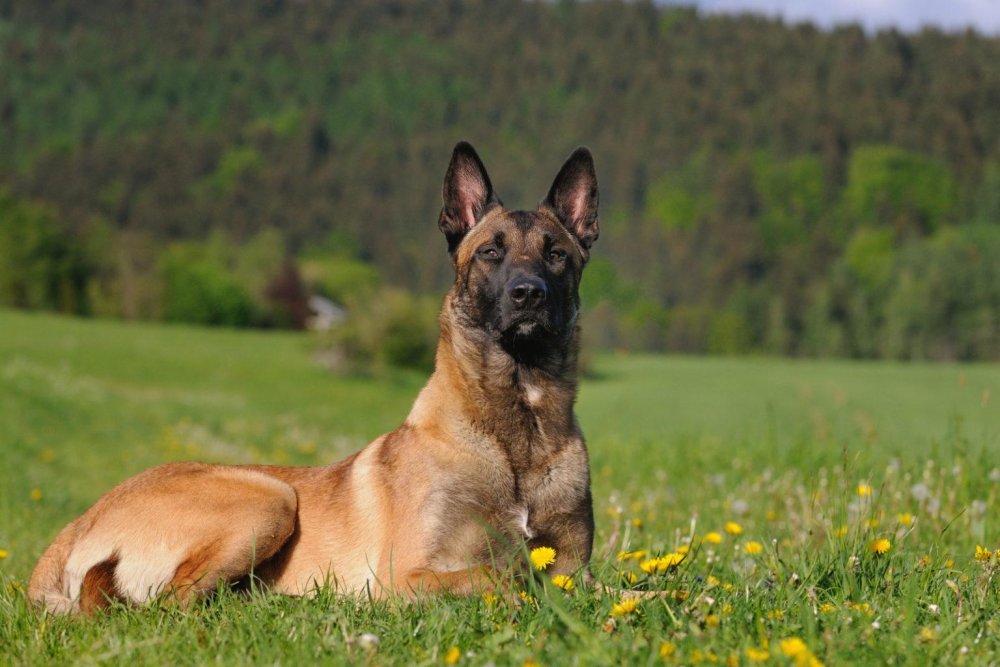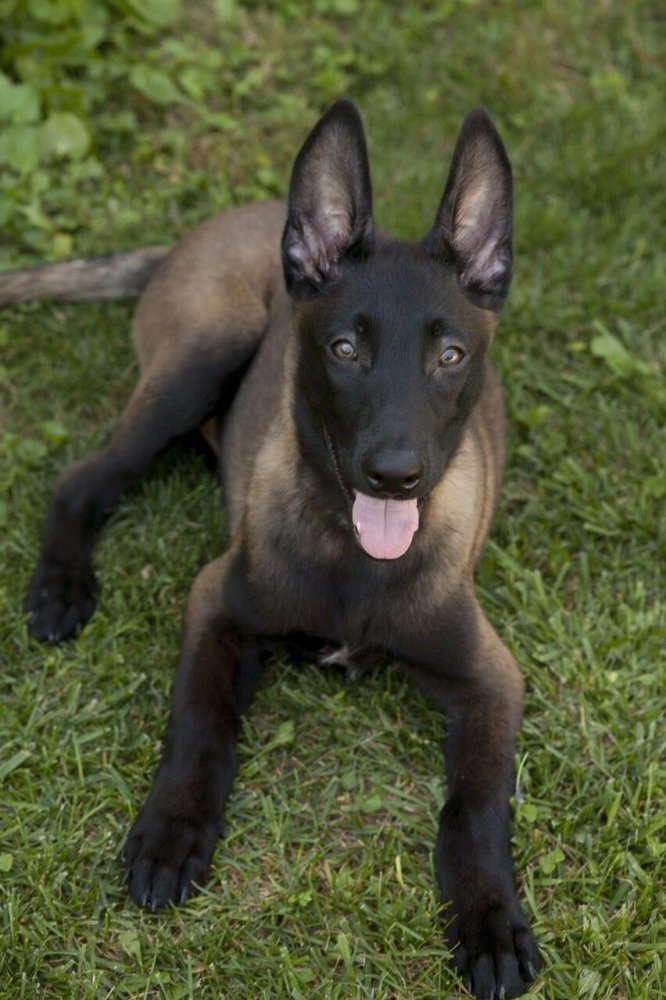- Breed Category: Herding
- Country of Origin: Belgium
- Average Height: Males 61-66 cm, Females 56-61 cm
- Average Weight: Males 25-30 kg, Females 20-25 kg
- Average Life Span: 12-14 years
- Grooming Requirements: Low, occasional brushing
- Exercise Requirements: High, needs daily exercise
- Coat Type: Short, straight, dense
- Coat Color Variations: Fawn, mahogany, black mask
- Shedding Level: Moderate
- Ear Type: Erect
- Tail Type: Long, slightly curved
- Temperament: Loyal, protective, intelligent
- Intelligence Level: Very high
- Barking Tendency: Moderate
- Compatibility with Children: Good with proper training
- Compatibility with Other Pets: Varies, needs socialisation
- Training Ease: Highly trainable
- Common Health Issues: Hip dysplasia, eye problems
- Dietary Needs: High-quality, balanced diet
- Energy Level: Very high
- Drooling Tendency: Low
- Sensitivity to Weather: Tolerates cold, sensitive to heat
- Overall Maintenance Level: Moderate
- Original Purpose: Herding and guarding livestock
- Year of Recognition by Kennel Clubs: 1959
- Famous Breed Representatives: Max from “Max” movie
- Apartment Friendly: Not ideal, needs space
- Best Suited For: Active families, working roles
- Cost of Ownership: Moderate to high
- Unique Traits: Exceptional work ethic, agility
- Cultural Significance: Popular in police and military
- Popularity Rank: Increasingly popular
Did you know that the Belgian Malinois is one of the top choices for police and military work worldwide? This breed is renowned for its intelligence, agility, and loyalty. In this article, we’ll dive into what makes the Belgian Malinois so special, exploring its unique characteristics, rich history, and essential care tips.
The Belgian Malinois hails from Belgium, where it was originally bred in the late 19th century. It’s one of four Belgian herding breeds, developed for its herding and guarding abilities. Over time, its exceptional work ethic and versatility have made it a favourite in various roles, from search and rescue to personal protection. Understanding its origins helps appreciate the breed’s remarkable capabilities and needs.
Early Development and Historical Significance

Early Development of the Breed
The Belgian Malinois was crafted with precision and purpose. In the late 1800s, Belgian breeders sought a dog that could excel in herding and protection. They focused on creating a breed that was not only intelligent but also agile and hardworking. The result was a dog that could handle the demanding tasks of a shepherd, while also being a reliable guardian.
Role in Belgian Herding and Protection
In Belgium, the Malinois quickly became a staple in herding. Its keen instincts and quick reflexes made it perfect for managing livestock. But it wasn’t just about herding. The Malinois was also a trusted protector, keeping watch over farms and homes. This dual role highlighted its versatility and solidified its place in Belgian culture.
Key Historical Figures
Adolphe Reul, a professor of veterinary medicine, played a pivotal role in the breed’s development. He was instrumental in establishing the breed standards that ensured the Malinois’s unique qualities were preserved. His work laid the foundation for the breed’s future success.
Physical Characteristics
The Belgian Malinois is a picture of athleticism. With a sleek, muscular build, it stands out for its elegance and strength. Its coat is short and easy to maintain, typically fawn with a black mask. This breed is not just about looks; its physical traits are perfectly suited for the demanding tasks it was bred to perform.
Appearance and Unique Traits

Distinctive Appearance
The Belgian Malinois is a medium-sized dog, typically weighing between 25 to 30 kilograms. Its coat is short, dense, and weather-resistant, usually in shades of fawn with a striking black mask. This combination gives the Malinois a sleek and polished look. Its ears are erect and triangular, adding to its alert and intelligent expression.
Unique Physical Traits
What sets the Malinois apart is its athletic and agile build. This breed is all about power and grace, with a body designed for speed and endurance. Its strong, muscular frame allows it to excel in physically demanding tasks, making it a top choice for roles that require both strength and agility.
Temperament and Behaviour
Known for its intelligence and high energy, the Belgian Malinois is a breed that thrives on activity and mental stimulation. It’s loyal and protective, often forming strong bonds with its family. This dog is not just a worker; it’s a devoted companion that needs plenty of exercise and engagement to stay happy and healthy.
Personality and Suitability

Typical Personality Traits
The Belgian Malinois is known for its loyalty, intelligence, and high energy levels. These dogs are incredibly devoted to their families and are always eager to please. Their intelligence makes them quick learners, but it also means they need constant mental stimulation to prevent boredom. With their boundless energy, they thrive in active households where they can participate in various activities.
Suitability as a Family Pet and Working Dog
This breed is versatile, making it suitable both as a family pet and a working dog. They excel in roles that require focus and dedication, such as police work or search and rescue. As family pets, they are protective and form strong bonds with their owners, making them excellent companions for those who can meet their exercise and training needs.
Interaction with Children and Other Animals
Belgian Malinois dogs are generally good with children, especially when raised with them. They are protective and can be gentle playmates, but supervision is recommended due to their high energy. With other animals, early socialisation is key to ensuring they get along well, as their herding instincts can sometimes lead to chasing behaviours.
Training and Exercise Needs
Training a Belgian Malinois requires consistency and patience. They respond well to positive reinforcement and thrive on challenges that engage their minds. Daily exercise is a must, with activities like running, agility training, or interactive games being ideal. Without sufficient exercise and mental stimulation, they can become restless and develop behavioural issues.
Training, Exercise, and Health

Importance of Early Training and Socialisation
Getting a head start on training and socialisation is crucial for a Belgian Malinois. These dogs are smart and eager to learn, but they need guidance to channel their energy positively. Early exposure to different environments, people, and other animals helps them grow into well-rounded adults. It’s all about setting the right foundation.
Recommended Training Techniques
When it comes to training, positive reinforcement is the way to go. These dogs respond well to rewards and praise. Consistency is key, and keeping sessions short and engaging will hold their attention. Incorporating games and challenges can make learning fun and effective.
Daily Exercise Requirements and Activities They Enjoy
A Belgian Malinois needs plenty of exercise to stay happy and healthy. Think of activities like running, hiking, or agility courses. They love tasks that challenge both their body and mind. A good mix of physical and mental stimulation will keep them content.
Health and Lifespan
Generally, Belgian Malinois are healthy dogs with a lifespan of around 12 to 14 years. Regular vet check-ups and a balanced diet are essential to keep them in top shape. Being aware of common health issues like hip dysplasia can help in early detection and management.
Health and Care for Belgian Malinois
Common Health Issues
Belgian Malinois are generally healthy, but like any breed, they can be prone to certain health issues. Hip dysplasia is a common concern, so regular vet check-ups are crucial. Eye problems and elbow dysplasia can also occur, so keeping an eye on any changes in behaviour or mobility is important.
Average Lifespan and Health Tips
With proper care, a Belgian Malinois can live between 12 to 14 years. To keep them healthy, ensure they have a balanced diet and plenty of exercise. Regular vet visits and vaccinations are key to catching any potential issues early.
Preventative Care Recommendations
Preventative care is all about being proactive. Regular dental care, flea and tick prevention, and maintaining a healthy weight are essential. Consider joint supplements if recommended by your vet, especially as they age.
Grooming and Maintenance
The Malinois has a short, dense coat that’s easy to maintain. Weekly brushing will keep their coat healthy and reduce shedding. Bathing is only needed occasionally, as their coat is naturally weather-resistant. Regular nail trimming and ear cleaning should also be part of their grooming routine.
Coat Care and Grooming Routines
Shedding and Seasonal Grooming Tips
The Belgian Malinois has a short, dense coat that sheds moderately throughout the year, with heavier shedding during seasonal changes. To manage this, a weekly brushing routine is essential. During shedding seasons, you might want to increase this to a few times a week. This helps remove loose hair and keeps their coat looking sleek.
Bathing is only necessary when they get particularly dirty, as their coat is naturally weather-resistant. Regular grooming not only keeps them looking their best but also provides an opportunity to check for any skin issues or parasites.
Diet and Nutrition
A balanced diet is crucial for the health and vitality of a Belgian Malinois. High-quality dog food that meets their nutritional needs is a must. Look for options rich in protein to support their active lifestyle. It’s important to monitor their weight and adjust portions as needed to prevent obesity.
Consulting with a vet can help tailor a diet plan that suits their specific needs, especially if they have any health concerns. Fresh water should always be available to keep them hydrated, particularly after exercise.
Nutritional Needs and Feeding Tips
Nutritional Needs for Optimal Health
The Belgian Malinois thrives on a diet rich in protein and essential nutrients. High-quality dog food, preferably with meat as the first ingredient, supports their active lifestyle. Omega-3 and Omega-6 fatty acids are beneficial for their coat and skin health.
Foods to Include and Avoid
Include lean meats, fish, and vegetables in their diet. Avoid foods high in fillers like corn and soy, as well as artificial additives. Chocolate, onions, and grapes are toxic to dogs and should be kept out of reach.
Feeding Schedules and Portion Recommendations
Divide their daily food intake into two meals to maintain energy levels. Portion sizes depend on their age, weight, and activity level, so consult your vet for personalised advice. Always provide fresh water, especially after exercise.
Fun Facts and Trivia
Did you know the Belgian Malinois can run up to 48 km/h? Their speed and agility make them exceptional in roles like search and rescue. They also have a keen sense of smell, often used in detection work.
Interesting Tidbits about the Breed
Famous Belgian Malinois in Media or History
The Belgian Malinois has made quite a name for itself in both media and history. One of the most famous Malinois is Cairo, the military dog who played a crucial role in the operation that led to the capture of Osama bin Laden. This breed’s intelligence and agility make it a top choice for high-stakes missions.
In the world of cinema, the Belgian Malinois has also had its moments in the spotlight. The movie “Max” features a Malinois as the main character, showcasing the breed’s loyalty and bravery. This film helped highlight the breed’s capabilities and brought it to the attention of dog lovers worldwide.
Beyond the screen, the Malinois has been a favourite among law enforcement agencies. Its keen sense of smell and quick reflexes make it ideal for detection work, from narcotics to explosives. This breed’s versatility and dedication have cemented its place in both history and popular culture.
Final Thoughts

The Belgian Malinois is a remarkable blend of intelligence and agility. This breed’s loyalty and versatility make it a standout choice for both families and working roles. While they require significant exercise and mental stimulation, the rewards of owning a Malinois are immense, offering companionship and protection. Embracing their unique traits and meeting their needs can lead to a fulfilling relationship with this exceptional breed. For those ready to commit, the Belgian Malinois promises a dynamic and rewarding journey.
